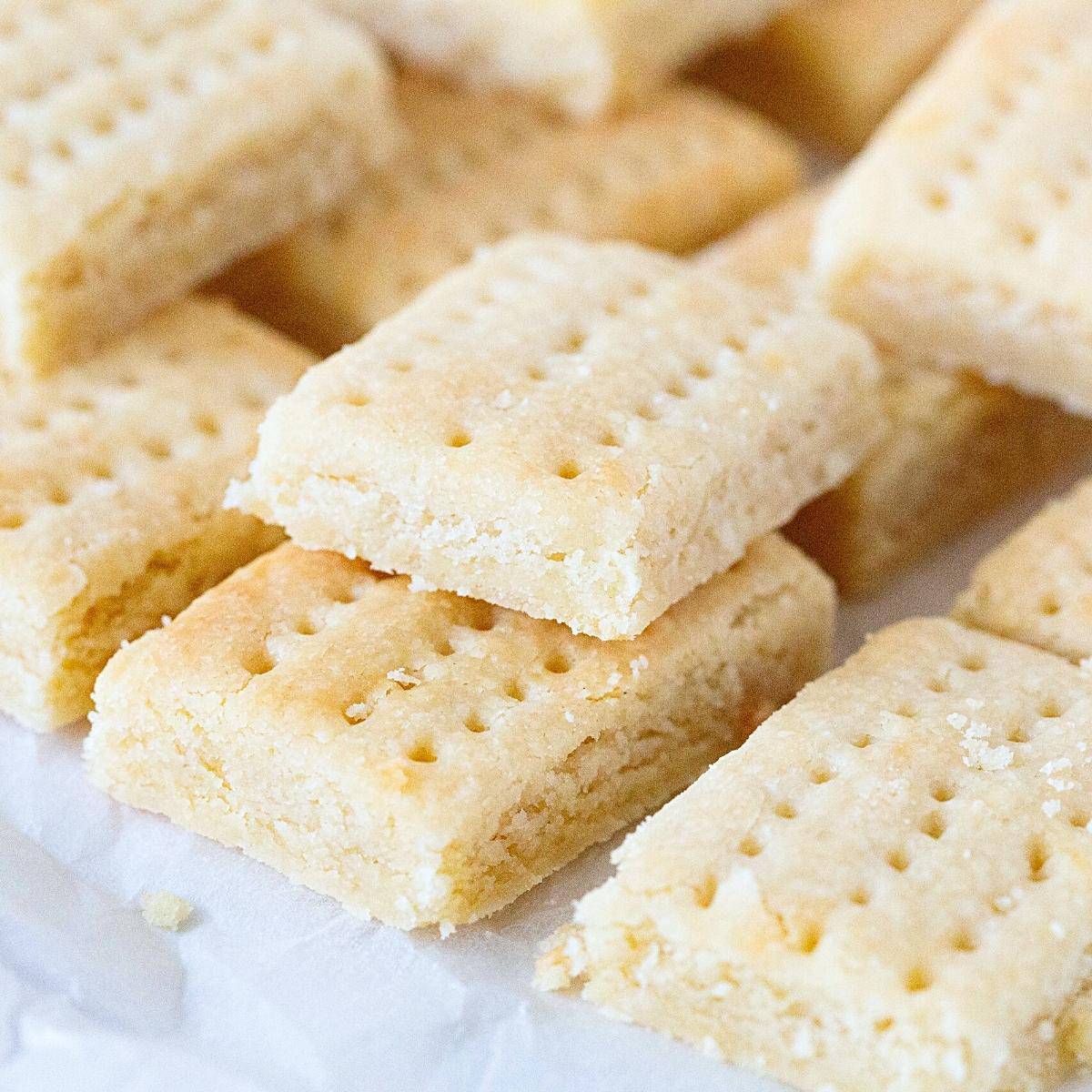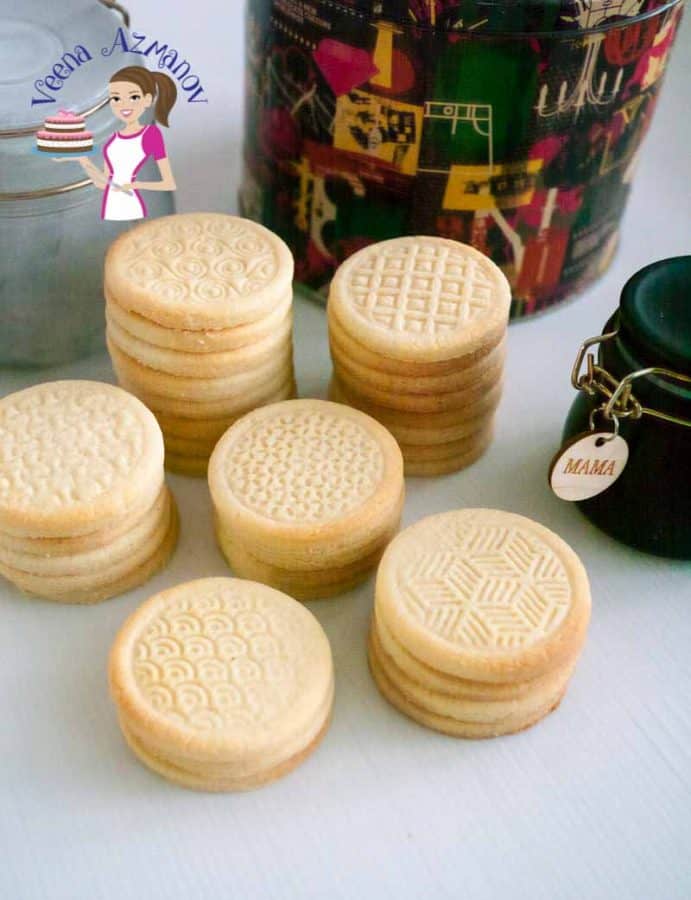Scottish shortbread is arguably one of Scotland’s most iconic and beloved treats. It’s known for its buttery texture and crumbly, melt-in-your-mouth layers. But what exactly is shortbread, and why is it so closely associated with Scotland? Shortbread is a traditional butter-based biscuit that originated in Scotland during the medieval times. Its name comes from the ancient term “short,” which refers to the crumbly texture achieved using a high proportion of fat to flour. In the case of shortbread, the fat of choice is rich, creamy butter. So why is shortbread synonymous with Scotland? The connection dates back to the Middle Ages when Scotland had an abundance of oats and butter, making them essential ingredients in many Scottish recipes. Shortbread quickly became a staple in Scottish culinary traditions. It’s often served during important occasions like weddings, Christmas, or Hogmanay (Scottish New Year’s Eve). The simplicity and versatility of shortbread, along with its delicious taste and comforting texture, contributed to its popularity worldwide. As time passed, shortbread transcended its humble origins and became an internationally recognized symbol of Scottish culture. Today, Scottish shortbread is enjoyed worldwide and has evolved to include various flavorings and shapes, such as the classic round “petticoat tails” or the rectangular “fingers.” However, at its core, Scottish shortbread remains true to its roots, embodying the traditional recipe and its rich history.
Why is this the best Scottish shortbread recipe?
Crafted with precision and attention to detail, this recipe captures the essence of traditional Scottish shortbread. Each bite transports you to the rolling green hills of Scotland, where generations of bakers have honed their skills and perfected this beloved delicacy. With its signature delicate crumb, buttery richness, and irresistible taste, this recipe embodies Scottish shortbread’s heart and soul. But what sets this recipe apart from the rest? The answer lies in its careful balance of ingredients and meticulous technique. The combination of high-quality flour, soft butter, vanilla, salt, and sugar creates a harmonious symphony of flavors and textures, making this shortbread recipe exceptional. The flour provides the foundation for Scottish shortbread’s crumbly yet tender texture. Combined with the perfect ratio of soft butter, it forms a delicate and flaky structure that melts in your mouth with each bite. The addition of vanilla adds a subtle hint of sweetness and warmth, elevating the overall flavor profile of the shortbread. Furthermore, including salt enhances the balance of flavors, ensuring that each ingredient harmoniously complements the others. And, of course, the sugar brings just the right amount of sweetness. It provides a hint of caramelization and a satisfying richness, making this shortbread recipe unforgettable.
Ingredients and substitutes
Flour is the backbone of this recipe, providing structure and stability to the shortbread. Opt for a high-quality all-purpose flour with a moderate protein content to ensure the ideal balance between tenderness and structure. Consider using a blend of different flours, such as a combination of all-purpose and rice flour, to add an extra delicate touch to your shortbread. Soft butter is another key ingredient that brings richness and a melt-in-your-mouth texture to the final result. It’s important to use unsalted butter to control the amount of salt in the recipe. Additionally, allowing the butter to soften at room temperature before incorporating it into the dough ensures proper creaming and a homogenous mixture. Adding a splash of pure vanilla extract elevates the flavor profile of the shortbread, adding a subtle but noticeable fragrance and depth. Suppose you don’t have vanilla extract on hand. You can substitute it with other flavorings like almond extract or a generous amount of finely grated citrus zest for a citrusy twist. While often overlooked, salt is an essential ingredient that enhances the balance of flavors in the shortbread, preventing it from tasting too sweet or one-dimensional. A small pinch of salt is all you need to bring out the richness and complexity of the other ingredients, creating a harmonious blend of flavors. Lastly, sugar is what brings a touch of sweetness and a hint of caramelization to the shortbread. The amount of sugar can be adjusted according to personal preference – a little less for a less sweet shortbread and a little more for those with a sweet tooth. Remember that fine granulated sugar will dissolve more easily into the dough, resulting in a smoother texture.
Step-by-step Scottish shortbread
Start by preheating your oven to the recommended temperature, usually around 325°F /160°C/ Gas Mark 3. This will ensure that your shortbread bakes evenly and attains that perfect texture we aim for.
Next, cream the softened butter and sugar together until light and fluffy using an electric mixer or a wooden spoon. This will incorporate air into the mixture and create a creamy base for your shortbread. Fine granulated sugar will ensure easy dissolution into the dough, resulting in a smoother texture. Then, add the salt and vanilla extract, followed by the sifted flour. Sifting the flour ensures no lumps and helps achieve a lighter texture. Mix the dough until it comes together, being careful not to overmix, as this could result in a tougher shortbread. Transfer the dough onto a lightly floured surface and bring it into a ball. Then, shape it into a rectangle and wrap it in plastic. Chill in the fridge for 15 minutes until it’s not too hard to roll.
Place the dough between two sheets of parchment paper. Press or roll the dough using your hands or a rolling pin until it reaches a thickness of about 1/4 inch. Next, cut the dough into your desired shapes with a sharp knife or bench scraper while it is still warm. Traditional Scottish shortbread recipes are often shaped into rectangles or wedges but feel free to let your creativity shine with fun shapes.
Finally, it’s time to bake your Scottish shortbread. Pop the baking sheet into the preheated oven and let the shortbread bake for approximately 20-25 minutes or until the edges turn golden brown. Keep a close eye on them, as baking times may vary depending on the thickness and size of your shortbread.
Tips for success
First and foremost, it’s crucial to use high-quality butter when making your Scottish shortbread. Butter is the star ingredient here, so opt for unsalted butter that is both fresh and of good quality. This will contribute to the rich, buttery flavor that makes Scottish shortbread irresistible. Next, make sure to cream the butter and sugar together thoroughly. This step is crucial for achieving the desired texture and flaky layers. Creaming the butter and sugar until light and fluffy will create tiny air pockets in the dough, resulting in a light and delicate shortbread. When adding the dry ingredients, be careful not to overmix the dough. Overmixing can develop gluten and make the shortbread tough instead of tender. Incorporate the flour and other dry ingredients just until the dough comes together, then stop. This will help maintain the desired texture and ensure a melt-in-your-mouth experience. Another tip for success is to chill the dough before baking. After shaping the dough into a round or rectangular shape, wrap it tightly in plastic wrap and refrigerate for at least 15 minutes. Chilling the dough allows the butter to solidify, which leads to flakier layers and better shape retention during baking. Lastly, when baking your Scottish shortbread, keep a close eye on it, as baking times may vary. The edges should turn golden brown, indicating that the shortbread is ready. Remember that thicker and larger pieces may require additional baking time, while smaller shapes may bake faster. Trust your instincts and adjust the baking time to achieve that perfect golden hue.
Chocolate Shortbread Cookies Shortbread Cookies – 5 Ingredients Ginger Shortbread with Molasses Blueberry Tart (custard filled) Melting Moments Cookies
Frequently asked questions
Creative variations
Citrus Zest: Add a burst of brightness to your shortbread by incorporating citrus zest into the dough. Whether you prefer the tangy notes of lemon, the vibrant aroma of orange, or the zesty kick of lime, the addition of citrus zest can elevate the flavor profile of your shortbread. Nutty Delights: For an extra crunch and depth of flavor, consider adding chopped nuts to your shortbread dough. The nutty twist will add a delightful dimension to your shortbread, whether you opt for traditional choices like almonds or walnuts or try something more adventurous like pistachios or hazelnuts. Chocolate Indulgence: Indulge your sweet tooth by incorporating chocolate into your shortbread. From chocolate chips to drizzles of melted chocolate on top, adding cocoa goodness will turn your shortbread into an irresistible treat. You can even experiment with different types of chocolate, like dark, milk, or white, to tailor the flavor to your liking. Spiced Sensations: Infuse your shortbread with warm and aromatic spices for a delightful twist. Cinnamon, nutmeg, cardamom, or even a pinch of ginger can transform your traditional shortbread into a comforting and spiced delight. Fruity Infusion: Add a fruity flavor by incorporating dried fruits into your shortbread dough. Whether you choose raisins, cranberries, apricots, or a mix of your favorite dried fruits, their natural sweetness will complement the buttery richness of the shortbread.
Creative ways to serve shortbread
Tea Time Delight: Shortbread is the perfect companion to a relaxing afternoon tea. Serve your shortbread with a piping hot cup of tea for a classic pairing that impresses you. The buttery texture and delicate sweetness of the shortbread complement the soothing flavors of the tea, creating a match made in heaven. Dessert Extravaganza: Go beyond the traditional cookie shape and use your shortbread as a base for a show-stopping dessert. Crumble the shortbread and layer it with fresh berries and whipped cream to create a stunning trifle. Alternatively, use it as a crust for a tart or cheesecake, adding a delightful twist to your favorite desserts. Ice Cream Sandwiches: Take your shortbread to the next level by turning it into mouthwatering ice cream sandwiches. Sandwich a scoop of your favorite ice cream between two shortbread cookies, and enjoy the sweet and buttery goodness with each bite. You can even roll the edges of the sandwiches in crushed nuts or chocolate chips for an extra touch of indulgence. Chocolate Dipping Delights: Dip your shortbread in melted chocolate for an irresistible treat. Whether you prefer dark, milk, or white chocolate, the combination of its smooth richness with the crumbly texture of the shortbread is simply divine. You can also sprinkle crushed nuts, sea salt, or colorful sprinkles on top for added flavor and visual appeal. Creative Presentations: Get creative with how you present your shortbread. Use cookie cutters to create fun and festive shapes for special occasions or holidays. You can also stack different sizes of shortbread to create a tower or arrange them in a decorative tin or glass jar for a delightful gift. Personalize your presentation with ribbons, labels, or handwritten notes to make it even more special.
Did you LIKE this recipe? Save it for later. You can find my recipes on Pinterest. Follow me on Facebook, Twitter, and Instagram.Subscribe, and I’ll send you new recipes right to your inbox. Thank you for sharing - Save for later






















